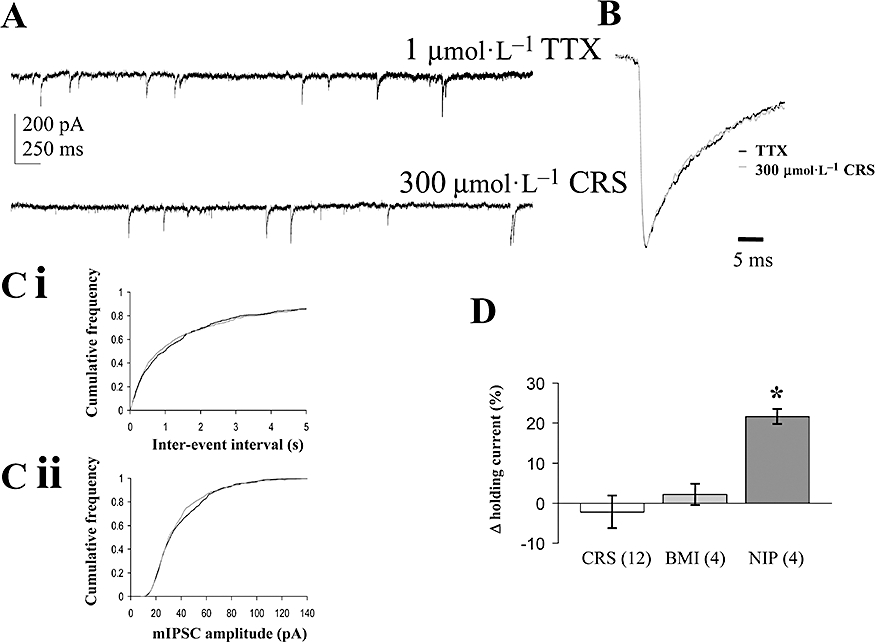Figure 10.

Effects of carisbamate (CRS) on spontaneous inhibitory synaptic transmission. (A) Examples of continuous traces showing GABAA miniature inhibitory postsynaptic currents (mIPSCs) recorded from layer II-III piriform cortical neurones under whole-cell patch clamp in 1 µmol·L−1 tetrodotoxin (TTX) plus 5 µmol·L−1 NBQX (6-nitro-7-sulphamoylbenzo(f)quinoxaline-2-3-dione) (control) and in the presence of CRS (300 µmol·L−1), 15 min application, holding potential −70 mV throughout. (B) Overlaid, normalized data showing averaged mIPSC event profile (TTX control: 492 events; CRS: 551 events); note that TTX control and CRS events had very similar half-widths. (C) Pooled cumulative frequency plot (n= 9) for effects of CRS on control for (i) mIPSC inter-event intervals and (ii) mIPSC amplitude (note lack of significant effects for both graphs: each replicant P > 0.5, Kolmogorov-Smirnov test). (D) Effects of CRS (300–600 µmol·L−1), bicuculline methiodide (BMI, 10 µmol·L−1) and nipecotic acid (NIP, 500 µmol·L−1) on holding current levels expressed as percentage change relative to control baseline level (Δ%; *P < 0.05); number of replicates (n) given in parentheses. For CRS, grouped data are presented based on experiments by using 300 µmol·L−1 (n= 6), 400 µmol·L−1 (n= 3) and 600 µmol·L−1 CRS (n= 3) respectively (as detailed in text).
